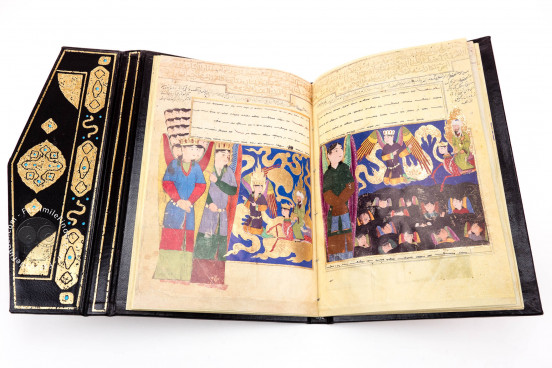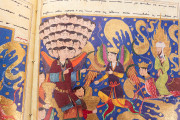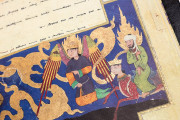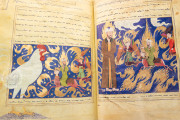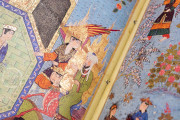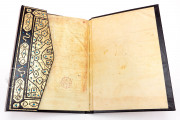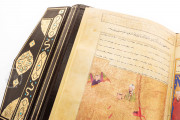Islamic culture produced books on par with those of the west and created numerous art works of impressive beauty.
The Timurid Style: an unsurpassed realism
In Persia, the perfect fusion of the Arab school and the Buddhist art of India and China produced the Timurid style. Timur’s son-Tamerlane, the Shah Ruj—transferred the capital from Samarkand, where his father lived, to Herat and promoted a style of illumination characterized by a realism that surpassed the typical stylization of Islam and resulted in a fascinating pictorial drama.
The even rhythm of the miniatures, masterfully balanced, brought about a pivotal moment in early 15th-century Persian art. The magic that inspires the Chinese-influenced design of these compositions of harmonious movement imparts to the art of the Persian miniature an excellence that, along with its exquisite palette, converts its illustrations into treasures of world art.
The masterpiece of the Timurid Style
The masterpiece of Timurid style is the Mi’ragnama: Apocalypse of Mohamed, produced in 1436 in Herat in the north of modern-day Afghanistan. It describes the adventures of the prophet Mohamed’s journey through the celestial sphere, in the company of the Archangel Gabriel, to arrive before the throne of God and his subsequent return trip to Earth through the seven circles of Hell. In medieval Europe this manuscript became known through the Latin translation that Alfonso the Wise commissioned from the school of translators in Toledo and that, in the judgment of experts, appears to have inspired Dante’s Divine Comedy
Binding description
Bound in leather and fire-engraved in gold.
We have 1 facsimile edition of the manuscript "Mi’ragnama: The Apocalypse of Mohamed": Mi`Ragnama. Apocalipsis De Mahoma facsimile edition, published by Patrimonio Ediciones, 2008
Request Info / Price

